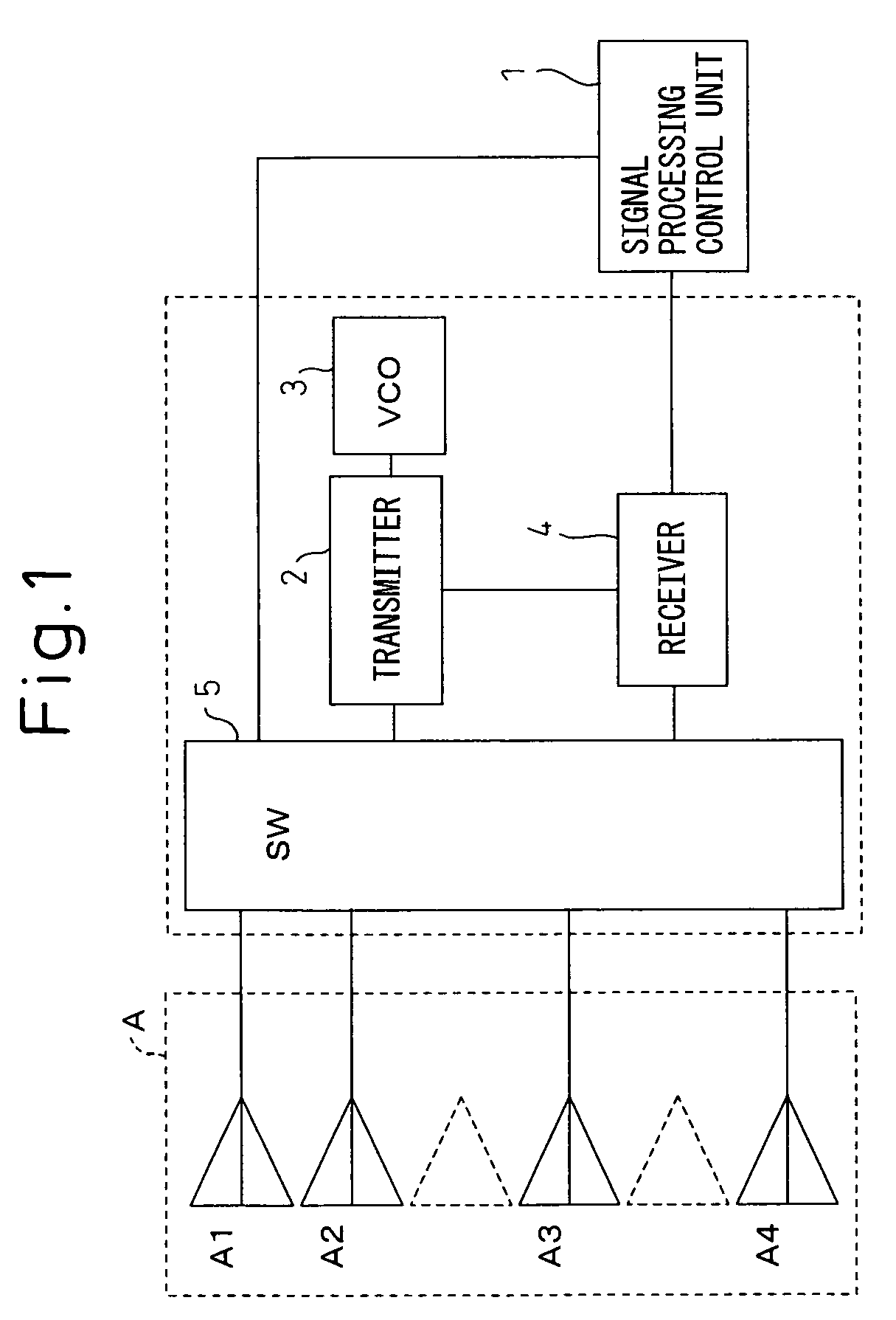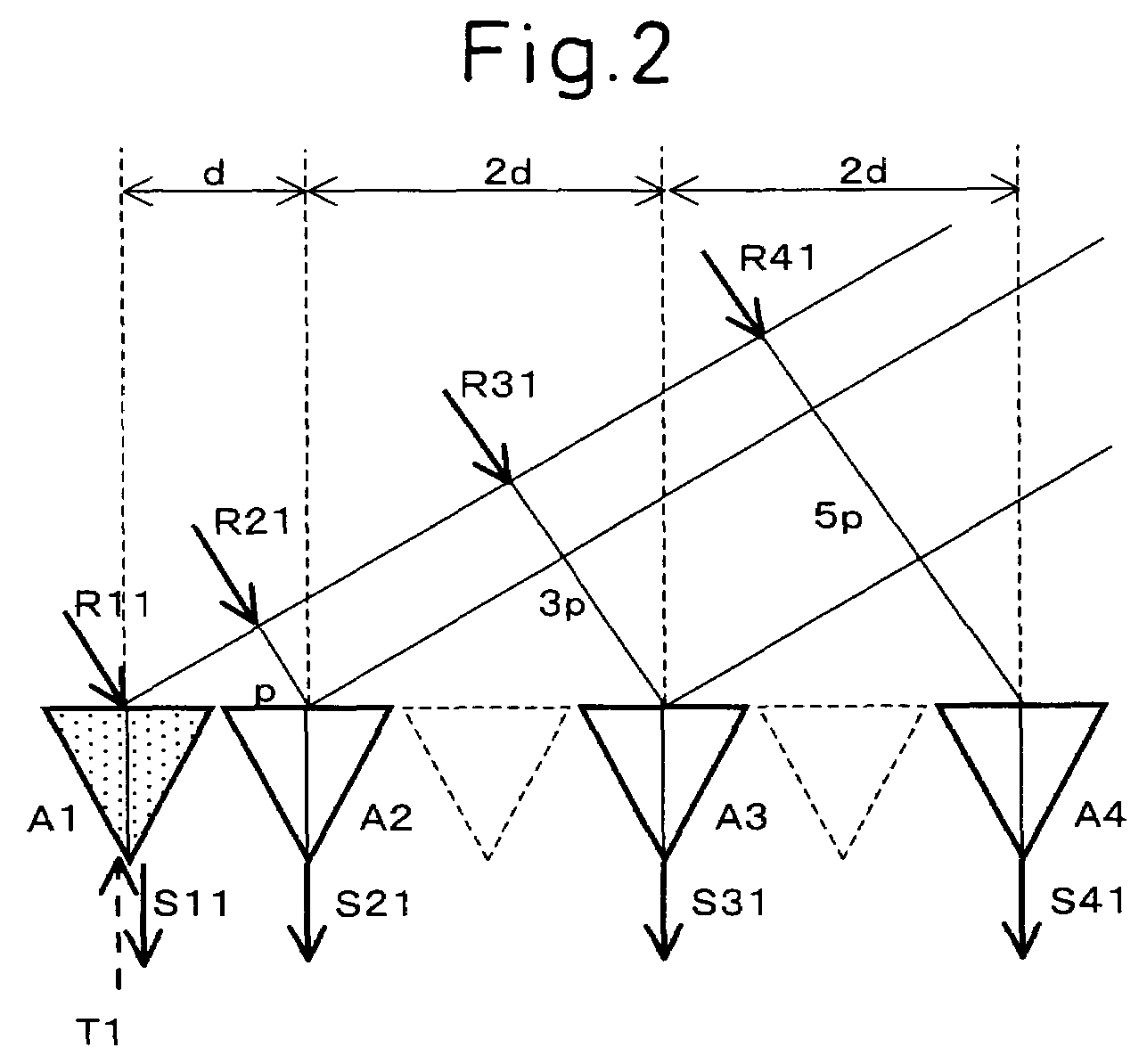Radar apparatus
a technology of radar and antenna, applied in diversity/multi-antenna systems, instruments, reradiation, etc., can solve the problems of limited mounting space and limited position of radar apparatus so as to transmit radio waves forward, and achieve the effects of enhancing the performance of radar apparatus, reducing the size and cost of radar apparatus, and increasing the number of channels
- Summary
- Abstract
- Description
- Claims
- Application Information
AI Technical Summary
Benefits of technology
Problems solved by technology
Method used
Image
Examples
first embodiment
[0096]In view of this, the receiving signal channel switching sequence relating to antenna transmission and reception in the radar apparatus shown in FIG. 1 is modified so that the multi-channel formation can be switched between a coarse mode and a fine mode depending on the environment in which the radar is used for operation, and so that the mode can be switched from the fine mode to the coarse mode when a faster azimuth detection speed is needed. FIGS. 8 and 9 show the antenna switching operation in the radar apparatus of the present invention.
[0097]First, suppose that a radio wave is transmitted as a transmitted signal T1 from the first selected antenna A1, as shown in FIG. 2. The shaded triangle in the figure indicates the transmitting antenna selected for transmitting the radio wave. The radio wave transmitted from the transmitting antenna A1 is reflected by a target object, and its reflected wave returns to the antenna array A. The radio wave arriving from the direction of an...
second embodiment
[0109]FIGS. 10 and 11 show a second embodiment in which the receiving signal channel switching sequence relating to antenna transmission and reception in the radar apparatus shown in FIG. 1 is modified so as to enhance the accuracy of azimuth detection; in this embodiment, the multiple receiving signal channels to be formed for the detection of a target object located ahead of the radar apparatus are divided into two groups, the left group and the right group, and multiple beams are formed using the plurality of channels in the left half and the plurality of channels in the right half, respectively, so that the processing for azimuth detection can be performed twice.
[0110]In FIG. 10, as in FIG. 4, the timing for switching between the transmitting antennas A1 to A4 and the receiving antennas A1 to A4 is shown in time series in conjunction with the triangular wave cycles of the transmitted FM-CW wave. In FIG. 10 also, receiving antenna 1 indicates each of the transmitting antennas A1 ...
PUM
 Login to View More
Login to View More Abstract
Description
Claims
Application Information
 Login to View More
Login to View More - R&D
- Intellectual Property
- Life Sciences
- Materials
- Tech Scout
- Unparalleled Data Quality
- Higher Quality Content
- 60% Fewer Hallucinations
Browse by: Latest US Patents, China's latest patents, Technical Efficacy Thesaurus, Application Domain, Technology Topic, Popular Technical Reports.
© 2025 PatSnap. All rights reserved.Legal|Privacy policy|Modern Slavery Act Transparency Statement|Sitemap|About US| Contact US: help@patsnap.com



